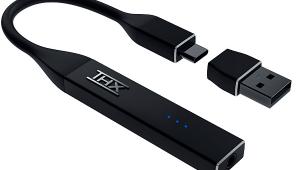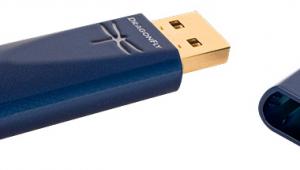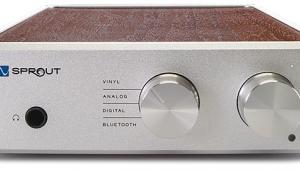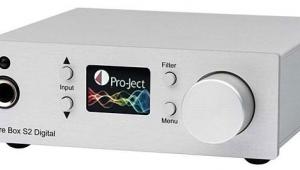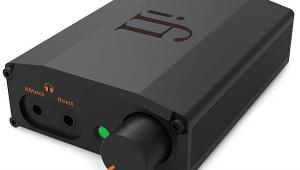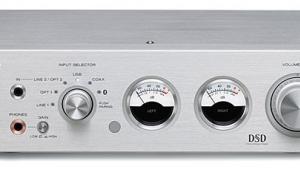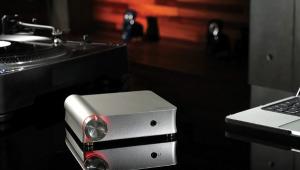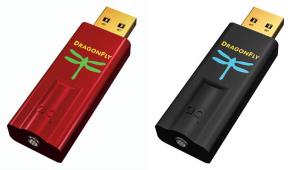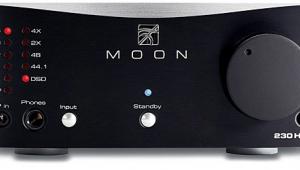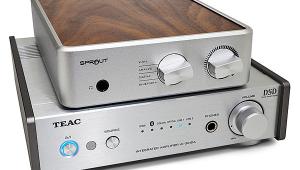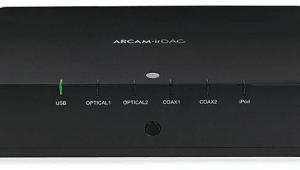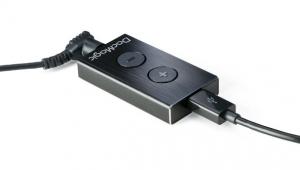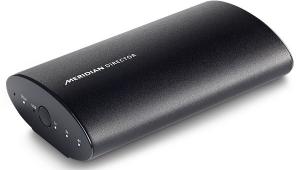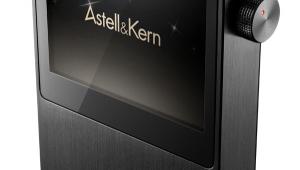Review: HRT iStreamer and NuForce Icon iDo iOS Docks
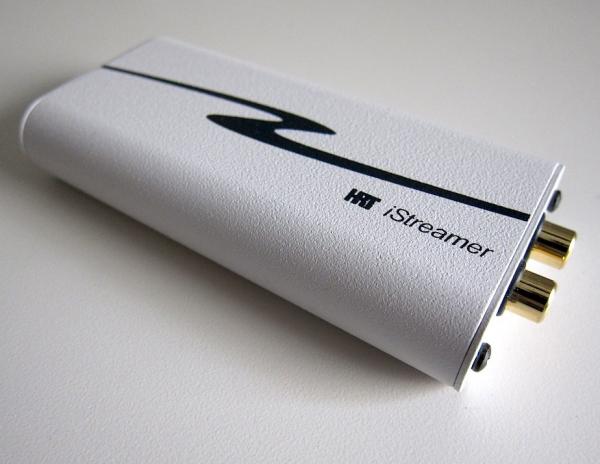
The dirty little secret of the iOS aftermarket accessory world (at least where audiophiles are concerned) is that Apple's various bricks and slabs actually sound fairly good out of the box. Output impedance of the headphone jack is comfortably low (around 5 ohm for iPods and iPads most cases, below 1 ohm for the iPhone 4/4s), the onboard DAC isn't a slouch - totally adequate for on-the-go, and for everyday desktop listening, you could do a lot worse.
But that might not be enough for you.
There are plenty of situations that demand additional gear. Despite what the consumer electronics industry would have you believe, headphones just aren't appropriate for every situation. Wanna share? Having a party? Creating ambience? You need to move some air, and that mono speaker on your iPad ain't gonna cut it. And what if you've invested in premium headphones? That onboard amp Apple threw in might prove to be just a tad underpowered for hungrier full-size cans.
Standalone docks with speakers serve an obvious enough purpose -- namely sharing your favored bitstream with your neighbors, be they willing or no. And the plain old docking station, even if it lacks speakers, displays your iDevice nicely, and - if you look around for a unit such as the Pro-Ject Dock Box S Digital or Pure i-20 we looked at last week - gives you a clean digital path from your apps to your primary listening system.
But what about devices that are even more minimal? HRT's ultra-minimal iStreamer and NuForce's full-featured Icon iDO are "docks" without the docking station, offering a place to plug in your 30-pin cable on one end, and ouputs on the other. You'll leave your iDevice on the desk, thank you very much. These aren't portable devices, mind you - they require external power (though HRT has an interesting twist on this, while we'll get to in a minute)
Who are these things for? And what place might they have in your digital listening?
The first thing to keep in mind is that audio output over the 30-pin connector is limited to 16bit/48kHz -- if you want high-rez playback, you're going to have to get nerdy and try the Camera Connector Kit workaround along with a more full-featured DAC or combo unit. Of course, that might not matter to you...but if you're so inclined, be aware. Both the NuForce and HRT units operate in USB Host mode when interfacing with your iDevice (i.e., they do the clocking; the claimed benefit is lower jitter), so you're getting the cleanest possible bitstream out of your beloved mobile.
HRT iStreamer
HRT's iStreamer will look familiar to anyone familiar with the rest of their line of single-purpose DACs. It's a flattened steel tube (in white, naturally), with a USB input on one end (for your 30-pin charge/sync cable) and stereo analog outputs on the other end, There's also another mini-USB plug, but that's solely for charging - you can't use this as a general-purpose DAC. A ladder of tiny LEDs indicates (by flashing on and off continuously, oddly enough) whether you're syncing to your iDevice at 32, 44.1, or 44 kHz, if you're interested in keeping track.
As you might gather from those LEDs (and guess given HRT's DAC heritage), the iStreamer extracts a digital signal from your iDevice (unlike some docks, which merely take the analog line out, also present on the 30-pin connector), and uses a high-quality DAC to give you an analog signal ready to hand over to the amplification device of your choice.
So how does it sound? Well, it doesn't sound like much of anything, which is about what I'd want from a DAC. On the desktop, it let me (with fairly minimal clutter) get the digital bitstream from my iPad out to a few headphone amps, which let me use more difficult to drive headphones (like HiFiMan's HE-500 planar magnetics, which otherwise aren't all that usable with iDevices) to listen to the lossless files I've been carrying around. It definitely satisfies the basic requirements.
And like any dock should, it charges my iPad as I'm listening. Certainly I could use the high-rez DAC of my choice via the Apple CCK, but that approach precludes simultaneous charging - which, I must admit, is pretty incovenient, especially if you feel like listening for any length of time. And after all, 44.1 khz files can sound just fine (and lately, more and more people have been arguing that they sound good enough to satisfy anybody).
One really trick application has emerged for the iStreamer - its small size and quality sonics have found it favor with car audio installers looking for an iPad interface for high-end automotive rigs. HRT has responded by packaging the device together with a 12v-to-5v power supply adapter as the "iStreamer 12v."
NuForce Icon iDo
A recent entry in the company's wide-ranging Icon series of desktop- and hi-fi-friendly DAC combination units, the iDo is, more or less, a dockless dock, with plenty of bells and whistles - just noplace to perch your mobile device.
The unassuming little box (available in a range of anodized colors, though we checked out the basic black version) offers a lot of functionality, including an onboard headphone amp with a stepped rotary volume encoder and a nifty blue-LED level indicator, a coaxial digital output for those looking to use a higher-end external DAC, and a pair of analog RCA outputs for interfacing with your other audio gear, and even a power switch (the kind of thing that you don't miss 'til you don't find it). No sync indicators (though a green LED indicates that your iDevice is connected), but for most listeners the level control will probably be just as useful, if not more so.
Given its wider range of features. The iDo is meant to serve in a standalone desktop role rather than solely as an interface to a bigger system, and it succeeds admirably in that role. Output impedance of the onboard headphone amp is comfortably low (5 ohms, like our usual tester, the Musical Fidelity V-Can), and I noticed no oddities in performance from the headphones I tried with the unit (including a HiFiMan HE-500 and HE-400, the Skullcandy Mix Master, and the Denon AH-D7000, all of which were driven comfortably. Since the majority of traditional speakerless docks we've looked at (like the previously mentioned units from Pro-Ject and Pure) don't include a headphone amp, this is actually a pretty good value looked at in that light.
Bottom Line
The iDevice as a source has been accepted, by now, by average folks and audiophiles alike, so it's natural to see the explosion in audio accessory device types. The question that remains is what exactly this subcategory of "dockless" dock is meant for. - the HRT iStreamer has an obvious in-car application, and makes an interesting conduit to a bigger high-end listening system. Like the rest of HRT's line, it does its job, and does it well, and simply. NuForce's iDo, with its wider range of applications, is a more appealing box unless you really know what you need.
Interestingly, NuForce's Jason Lim told us when we asked him about the iDo's intended usage a while back, he envisions the device as a desktop companion - something that seemed a bit odd at first, given an iPad or iPhone's rather limited storage when compared to a desktop computer. Lim had considered the case of office workers unable to use their desktop machines as music servers, but I found that the iDo and iStreamer solved an interesting problem I often run into here at the S+V offices - bandwidth.
I am, luckily and obviously enough, permitted to use my work Mac as a music source - but my machine is often busy enough doing, well, work that playback from both local sources and NAS and streaming music services can get rather glitchy. Enter the iOS dock - plugging in an iPad gave me smooth playback performance, and I enjoyed running both devices into a variety of headphone amps that I'd otherwise been using in combination with a USB DAC fed by my Mac.
The iDo is a particularly slick one-stop solution in this application, given the onboard headphone amp (which'll let you use headphones that your iDevice might have difficulty with on its own), and if you don't already have other personal listening gear it's worth a look for this sort of use. It's only real downside is the fact that it isn't portable. But the devices in that category are a lot more expensive. As with all things A/V, your mileage may vary, of course, but if you've got an overworked or otherwise-occupied computer and a taste for listening while you labor, one of these little boxes might be just the ticket.
- Log in or register to post comments
